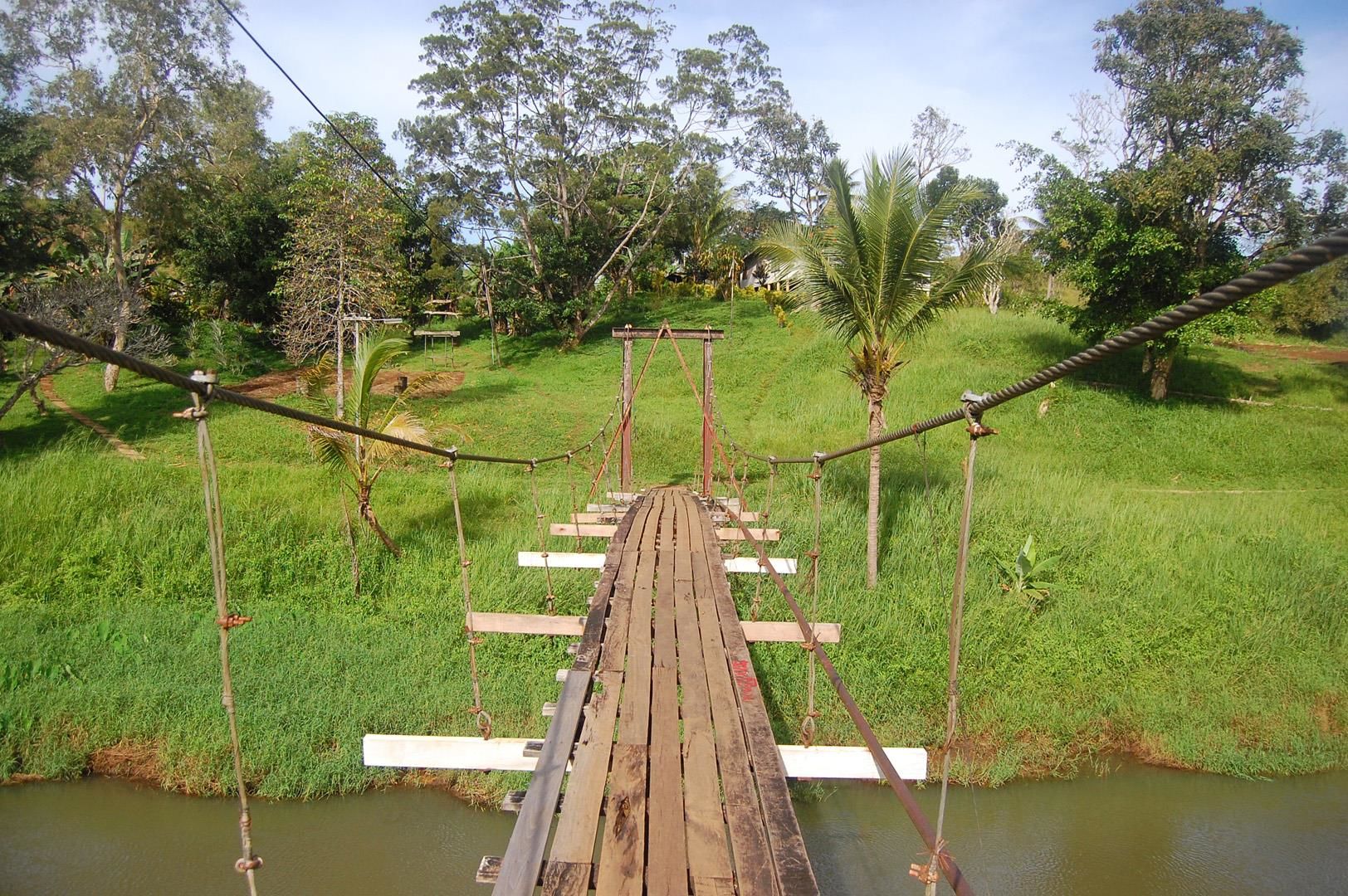
Adventures Beyond the Beaten Path
It is a land of few roads but many paths. Some lead to villages where the traditions of a thousand generations still hold sway. Others climb into fog-shrouded highlands or follow jungle streams to hidden waterfalls. Whatever the destination, a hike in Papua New Guinea is sure to be an adventure—but not a hardship. Guided and fully supported treks are available for persons of all interests and abilities. Itineraries range from coastal treks and easy half-day birding and orchid tours in the rainforest to immersive multi-day explorations that take in mountains, traditional villages and abandoned fortifications from the Second World War.
Highlights
- Best for: All travellers with a sense of adventure and love of nature and culture
- Best season to visit: Year round
- Weather: Tropical and moist, with minimal seasonal variation, and air temperatures from the high 70s to high 80s
Things to Do
PNG Information
Hiking in PNG Overview
The vast majority of Papua New Guinea is served by footpaths rather than roads. Tracks lead from coastlines into valleys and mountains, and many inland villages are still accessed only by walking. This creates tremendous opportunities for hikers. Some adventures are best done with outfitters who have local relations, while others are self-guided routes that run from lodge to lodge.
Hiking in PNG Tips
Though you won't be the first outsiders to venture into the jungles and mountains of New Guinea, you will be one of a relatively few who undertake this adventure. Don't expect marked and manicured nature trails, but neither will you need to hack your way through the jungle like an explorer.
Best Places to Hike in PNG
The Kokoda Trail passes through mountain villages and historic battlefields. On the Kabuni Fjord, hikers meet local villagers of the Kabuni/Lelia people. Ambua Lodge is a world-renowned birding destination. More than a thousand species of orchids grow in the rainforests around Rondon Ridge. Trails through the Doma Peaks begin at cool elevations of almost 7,000 feet. The grasslands of the Tonda Wildlife Management Area teem with herds of deer, wallabies, monitor lizards and migratory birds.
What to Pack for Hiking in PNG
Sturdy shoes with raised sole pattern for traction on muddier sections. Light and slightly loose-fitting clothing will provide sun protection and comfort in tropical conditions near the coast, but a light jacket may be needed in the mountains, which rise to heights of more than two miles.
Passport and/or Visa Requirements
Entry Requirements: All U.S. citizens are required to present a valid passport which must be valid for at least 6 months beyond the date of entry into the country. Proof of onward or return ticket may be required and you must have at least 1 blank page in your passport for the entry stamp. Visas are required for entry for stays less than 60 days which are given upon arrival for tourist stays.
Exit Requirements: All persons leaving PNG, pay a Government Departure Tax which should be included in your airline ticket.
Immunizations
While there are no required vaccines for entry into Papua New Guinea, it is always recommended that you check with your doctor and the Centers for Disease Control on recommended vaccinations for travel at cdc.gov.
Culture and Customs
Papua New Guinea is one of the most fascinating and primeval destinations on earth. It is a land of smoldering volcanoes, impenetrable forests, exotic wildlife and still more exotic cultures. With few roads, vast tracts of the interior highlands remained unknown to the outside world until the mid 20th century. This region is home to isolated tribal communities that speak more than 800 distinct languages. Village elders are one generation away from a stone-age heritage, and much of the nation still embraces broad elements of traditional lifestyles and dress. Elaborate rituals accompany marriages, deaths, rites of passage and ceremonial eats. Cultural gatherings such as sing sings are not performed for tourists but are an actual gathering of tribes to resolve conflicts and disputes through competitive song and dance rather than warfare. In addition to unique cultural interactions that can include stays in traditional villages, visitors can engage in a range of eco adventures, from birding excursions to mountain treks and river trips in dugout canoes.
Electricity, Phone and Internet Access
Electricity in PNG is 240 volts, 50 Hz, similar to Australia, so an adapter will be needed for U.S. visitors. Some hotels have 110 adapters for hair dryers and shavers. The country code for PNG is 675. Check with your cell phone provider for international plans including data, text and voice. Some hotels offer WiFi, but internet service can be spotty.
Water Quality
In general, drinking the tap water is not recommended. It is best to drink bottled water throughout the country.
Language & Currency
English and Tok Pisin are the official languages, but most communication is via Tok Pisin. There are over 800 indigenous languages spoken among the various native tribes. The local currency is the Papua New Guinea Kina (PGK) but U.S. dollars are accepted in some places. Check the currency rate here. ATM cards can be used at banks. It is recommended to change some money in Port Moresby upon arrival if possible.
Time
Papua New Guinea utilizes Papua New Guinea Time or PGT which is 10 hours ahead of Greenwich Mean Time (+10 GMT). PNG does not observe Daylight Savings Time.
Location, Size and Population
Papua New Guinea is a large island located in the southwestern Pacific and accounts for the eastern half of New Guinea and it’s numerous other offshore islands. The island is located 160 kilometers north of Australia. There are some 600 offshore islands off of Papua New Guinea. The size of Papua New Guinea is approximately 178,000 square miles (about the size of California) with the main island having the bulk of the surface area. The island of New Britain is approximately 14,000 square miles.
The population of Papua New Guinea is 7.77 Million (2016).